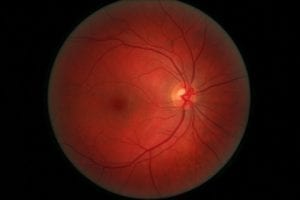In an interview with Medgadget, Dr. Christy Sheehy and Dr. Zachary Helft of C. Light Technologies discuss up-and-coming technologies in the diagnosis and treatment of neurological diseases such as multiple sclerosis. Read the full interview here.
Using technologies like artificial intelligence (AI) and eye-tracking, C. Light Technologies is poised to work towards earlier disease detection.
What is Multiple Sclerosis?
Multiple sclerosis is a neurological disease in which one’s immune system attacks the myelin sheaths, which cover nerve cells. Symptoms can include muscle weakness, loss of coordination, and speech problems. Learn more about multiple sclerosis here.
C. Light Technologies
C. Light Technologies describes itself as:
a neurotech and AI company using the most accurate commercially-available eye tracker (by 120X+) to better understand your brain, starting with multiple sclerosis.
They are beginning with a focus on multiple sclerosis in order to understand how specific their technology can get and how early disease detection is possible. According to Helft, they pursue their research based on a specific hypothesis:
“…that large eye-motion abnormalities start off as small ones early in the disease progression. So many different neurological disorders manifest in some type of eye-motion abnormality because so many different areas of the brain coordinate together to generate motion of the eye.”
The company hopes, in the future, to also help influence treatment for ALS, Parkinson’s disease, and Alzheimer’s disease. They are currently holding an Alzheimer’s study on a smaller scale, as well as a study on patients with concussions.
Dr. Christy Sheehy and Dr. Zachary Helft
Dr. Sheehy and Dr. Helft are co-founders of C. Light Technologies. They met at U.C. Berkeley, where Sheehy was focusing on ophthalmology and eye health. Sheehy has twelve years of experience in optical engineering, as well as clinical experience with patients with multiple sclerosis. Helft has ten years of experience in neuroscience and neurophysiology, and work experience focusing on macular degeneration.
Neurotechnology in Disease Detection
Many researchers believe that with earlier detection, the efficacy of treatment for neurological diseases will increase.
What is neurotechnology?
According to an article published in Frontier in Systems Neuroscience, neurotechnology creates a connection between technological features like computers or electrodes and your nervous system. As a result, researchers can manipulate physiological or neurological responses to alter something which may not be working the right way. The authors of this particular study note:
Neurotechnology-based interference with brain activity can be very effective, allowing for successful treatment of brain disorders.
Eye Tracking and Artificial Intelligence
During disease detection, researchers often look for specific biomarkers. A biomarker is a medical sign signifying the disease state or some aspect of biological function. In the case of neurological disorders, eye motion is a well-known biomarker.
Currently, there are few technologies which can detect subtle issues in eye movement that might mark early disease states. This was one of the motivating factors for C. Light, who sought to understand how eye motion might differ in patients with multiple sclerosis at different stages.
According to their interview, Sheehy states that C. Light has created a:
“novel 10-second retinal eye-tracking scan to assess brain health.”
Unlike other eye-tracking technologies, this system does not scan the pupil (which is at the front of the eye). Instead, C. Light Technologies scans the retina with a particular focus on retinal rod and cone cells. This technology is extremely sensitive, allowing it to get greater insight into eye motion.

Sheehy notes that researchers examine the 10-second scan to extract eye motion data at 500-1000x per second. The company then feeds this data into a unique measuring device, which Sheehy developed at U.C. Berkeley. With the help of artificial intelligence, C. Light is then able to track hundreds of data points.
So far, using data collected from 115 patients, C. Light Technologies has an 82% accuracy in predicting neurological disease with eye-tracking, and 86% accuracy using their technology alongside a 25-foot-walk and fatigue survey.
The Future of Neurotechnology
C. Light Technologies’ recently published multiple sclerosis study found that microsaccades, an involuntary eye movement, can be measured to recognize disease progression at different rates. Read their study in the Multiple Sclerosis Journal.
Ultimately, the company hopes to have their technology adopted by neurologists across the nation, offering their eye-tracking device at a price point roughly 25-80% less than others on the market. Most importantly, Sheehy and Helft hope to create an avenue for patients to detect issues before they arise. But Sheehy also remembers why she came into this realm: for patients. She says that her goal for C. Light’s promising technology is to:
“enable individuals to enjoy their life and their loved ones longer and provide patients and families with powerful information to inform patient care and decrease their stress.”


